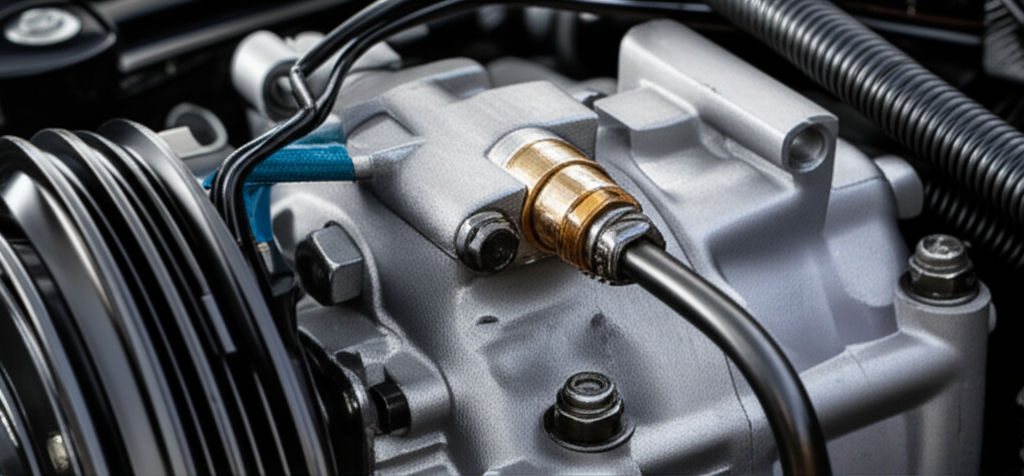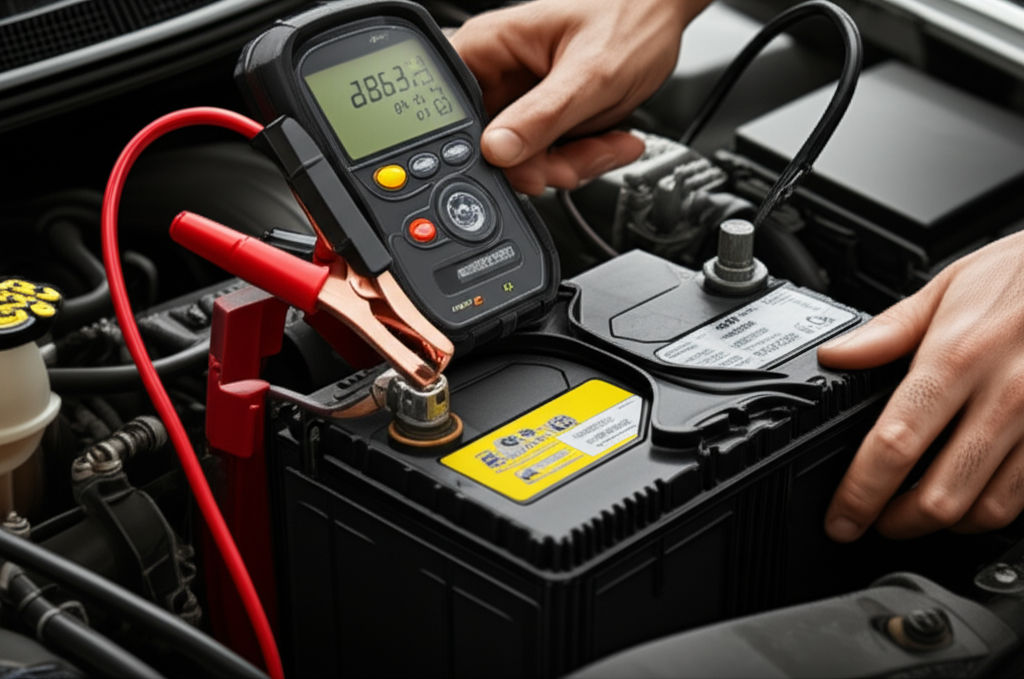Understanding An Automotive AC Diagram
Ellie Moore

Photo: Unlock your car's AC secrets! Learn to read automotive AC diagrams, diagnose issues, and troubleshoot problems. Stay cool and confident on the road.
Decoding the Cool: Your Guide to Understanding an Automotive AC Diagram
Imagine a scorching summer day, and you step into your car, dreading the heat. With a flick of a switch, a wave of cool, dry air envelops you, transforming your commute from a struggle to a sanctuary. This marvel of modern engineering, your car's air conditioning (AC) system, is a complex network of components working in harmony. While it might seem like magic, understanding the automotive AC diagram is the key to unlocking its secrets, allowing you to diagnose issues, perform basic maintenance, and truly appreciate the intricate dance of refrigerant and electricity.
For the average car owner, an AC system can feel like a black box. But with a clear car AC diagram, you gain a powerful tool that demystifies its operation, turning confusion into confidence. This comprehensive guide will break down the essential elements of an automotive air conditioning system, teach you how to interpret its diagrams, and equip you with the knowledge to troubleshoot common problems, ensuring your ride stays cool, comfortable, and reliable.
Why Understanding Your Car's AC Diagram Is Crucial
Beyond simply enjoying the cool air, grasping the basics of your car AC diagram offers several significant advantages. It's not just for professional mechanics; even a general understanding empowers you as a car owner.
Beyond the Basics: What an AC Diagram Really Shows
An automotive AC diagram is more than just a picture; it's a blueprint of your vehicle's cooling system. It visually represents the various components, their physical connections, and, critically, the flow of refrigerant and electrical signals. Think of it as a roadmap that shows you where everything is, how it's connected, and what path the refrigerant takes as it changes states to cool your cabin.
This visual guide helps you understand the "why" behind AC problems. For instance, if your AC is blowing warm air, a diagram helps you trace the potential culprits, from a refrigerant leak to a faulty compressor or a clogged condenser. It moves you beyond guessing and into informed troubleshooting.
Safety First: The Importance of Knowing Your System
Working with automotive systems, especially those involving pressurized refrigerants and electrical circuits, requires caution. Understanding your automotive air conditioning diagram enhances safety by helping you identify high-pressure lines, electrical connections, and potential hazards. Knowing the layout means you're less likely to accidentally disconnect something critical or expose yourself to dangers. It encourages proper procedure, like discharging the system safely if necessary, or understanding which fuses and relays control specific AC functions.
Decoding the Language: Key Components of an Automotive AC System
Before diving into reading an automotive AC diagram, it's essential to understand the primary components that make up your car's cooling system. These are the "characters" in our cooling story, each playing a vital role in transforming hot, humid air into a refreshing breeze. Most automotive AC systems utilize a vapor compression refrigeration cycle.
The Heartbeat: Compressor
The AC compressor is often called the "heart" of the system. Driven by the engine's accessory belt, its main job is to compress the low-pressure, gaseous refrigerant from the evaporator into a high-pressure, high-temperature gas. This compression is crucial because it raises the refrigerant's temperature and pressure, preparing it for the next stage of heat release. Common issues with compressors include leaks in seals or internal component failure.
The Heat Exchangers: Condenser and Evaporator
- Condenser: Located at the front of your vehicle, usually in front of the radiator, the condenser is where the high-pressure, hot gaseous refrigerant releases its heat to the cooler outside air. As heat is dissipated, the refrigerant condenses, changing from a gas back into a high-pressure liquid. A dirty or blocked condenser can significantly reduce AC performance.
- Evaporator: Tucked away inside your car's dashboard, the evaporator is the component responsible for actually cooling the air entering your cabin. The high-pressure liquid refrigerant, after passing through a metering device, expands and rapidly cools within the evaporator coils. As the blower fan pushes warm cabin air across these cold coils, the refrigerant absorbs the heat, causing it to evaporate back into a low-pressure gas. This process not only cools the air but also removes humidity, which is why your AC feels so dry.
The Moisture Control: Receiver-Drier/Accumulator
Depending on your AC system's design (expansion valve or orifice tube), your car will have either a receiver-drier or an accumulator.
- Receiver-Drier: Found in systems with an expansion valve, the receiver-drier is located between the condenser and the expansion valve on the high-pressure side. It stores liquid refrigerant, filters out debris, and, most importantly, contains a desiccant bag to absorb any moisture from the refrigerant, preventing corrosion and ice formation within the system.
- Accumulator: Used in systems with an orifice tube, the accumulator is positioned between the evaporator and the compressor on the low-pressure side. Its primary role is to store excess liquid refrigerant and ensure that only gaseous refrigerant enters the compressor, protecting it from damage that liquid compression could cause. It also contains a desiccant to remove moisture.
The Pressure Regulators: Expansion Valve/Orifice Tube
These components control the flow of refrigerant into the evaporator, regulating its pressure and allowing it to expand and cool.
- Expansion Valve (TXV): This precise metering device senses the temperature of the refrigerant leaving the evaporator and adjusts its opening to allow the exact amount of liquid refrigerant needed into the evaporator. This helps maintain a consistent evaporator temperature and prevents freezing.
- Orifice Tube: A simpler, fixed restriction device that creates a pressure drop, allowing the high-pressure liquid refrigerant to atomize into a low-pressure mist before entering the evaporator. Systems with an orifice tube typically use an accumulator.
The Brains: Sensors and Switches
Modern automotive AC diagrams also include various sensors and switches that monitor system parameters and control operation. These include:
- Pressure Switches: Monitor refrigerant pressure on both the high and low sides of the system. They protect components by preventing the compressor from operating if pressure is too high or too low, indicating a potential leak or overcharge.
- Temperature Sensors: Monitor cabin temperature, evaporator temperature, and ambient air temperature to help the control module maintain the desired cooling level and prevent evaporator freeze-up.
- Relays and Fuses: Essential electrical components that protect the system from overcurrents and control power to components like the compressor clutch and blower motor.
Navigating the Blueprint: How to Read an Automotive AC Diagram
Reading an automotive AC diagram might seem daunting at first glance, but with a systematic approach, you can decipher its information like a seasoned technician.
Identifying Symbols and Lines
- Component Symbols: Diagrams use standardized symbols to represent each part of the AC system. For instance, the compressor might be a circle with an arrow, a fan a circle with blades, and a switch an open or closed line with terminals. Familiarize yourself with common automotive electrical symbols.
- Lines:
- Refrigerant Lines: These are typically thicker lines, sometimes color-coded in diagrams (e.g., red for high-pressure, blue for low-pressure) or labeled to indicate the state of the refrigerant (liquid or gas, high or low pressure).
- Electrical Lines (Wires): Thinner lines represent electrical wires. They often have color codes (e.g., red for power, black for ground, green for signal) and labels indicating wire gauge or circuit numbers.
- Breaks and Dots: A dot indicates a connection or splice between wires, while lines crossing without a dot mean they don't connect.
Tracing the Refrigerant Flow
Understanding the refrigerant cycle is fundamental to interpreting the diagram.
- Compressor to Condenser (High-Pressure Gas): The compressor takes low-pressure gas from the evaporator and compresses it into a high-pressure, high-temperature gas, sending it to the condenser.
- Condenser to Receiver-Drier/Expansion Valve (High-Pressure Liquid): In the condenser, the hot gas cools and condenses into a high-pressure liquid. This liquid then flows to the receiver-drier (if equipped) and then to the expansion valve or orifice tube.
- Expansion Valve/Orifice Tube to Evaporator (Low-Pressure Liquid/Mist): The metering device (expansion valve or orifice tube) restricts the flow, causing a significant pressure drop and allowing the refrigerant to expand into a low-pressure liquid or mist as it enters the evaporator.
- Evaporator to Compressor (Low-Pressure Gas): Inside the evaporator, the refrigerant absorbs heat from the cabin air, boiling and changing back into a low-pressure gas. This gas then returns to the compressor to restart the cycle.
Following this continuous loop on your automotive AC diagram helps you visualize the system's operation and pinpoint where a blockage or leak might disrupt the flow.
Understanding the Electrical Pathways
Finance & Investment
View All
May 9, 2025
Yamaha Finance Loan ServicesYour blueprint for online authority: create expert SEO content. Focus on E-E-A-T, value, and user intent to stand out and rank higher.
Ellie Moore

October 16, 2025
GMAC Finance Auto Loan OptionsGo beyond keywords! Master expert SEO content to build authority, boost rankings, and earn trust with valuable, E-E-A-T aligned content.
Ellie Moore

March 24, 2025
Minimize Risk with Dollar-Cost AveragingLearn how dollar-cost averaging helps you minimize investment risks and stay consistent in volatile markets. Start building wealth the smart way today!
Ellie Moore

April 7, 2025
Toyota Financing Deals to Save BigUnlock online success with expert SEO content. It's non-negotiable for boosting rankings, building authority, and driving organic traffic in the digital landsca...
Ellie Moore

October 21, 2025
Mortgage Financing for BeginnersMaster expert SEO content for higher rankings & traffic. Build authority, trust, and stand out with E-E-A-T-driven value.
Ellie Moore

March 12, 2025
American Finance Company ReviewUnlock online authority with expert SEO content. Learn what it is, why it's vital for rankings & E-E-A-T, and how to create it for profound value.
Ellie Moore
Insurance
View AllExplore emerging trends reshaping insurance in 2025. Stay ahead with insights on AI, blockchain, and coverage innovations.
Ellie Moore
Protect your freelance career with tailored insurance. Discover coverage options for self-employed individuals.
Ellie Moore
Learn how gig workers can protect themselves with insurance solutions designed for freelance and flexible work.
Ellie Moore
Climate change impacts are rising—learn how climate risk insurance offers protection against extreme weather and environmental losses.
Ellie Moore
Switching insurance? Learn key considerations to find the best new provider while avoiding coverage gaps.
Ellie Moore
Understand how insurers assess risks to calculate premiums. Learn how your profile impacts your policy cost.
Ellie Moore
Education
View AllEthics in education is vital for balanced learning. Learn how to teach morality alongside knowledge transfer in today’s classrooms.
Read MoreOutdoor learning promotes cognitive and social growth. Explore how nature-based education enhances learning outcomes and student well-being.
Read MoreTake learning beyond the textbook with experiential education. Discover how real-world experiences create lasting knowledge and skills.
Read MoreLearn how UNESCO promotes education for all globally. Explore key initiatives and efforts aimed at fostering equal learning opportunities for everyone.
Read MoreCompetency-based education focuses on mastery over seat time. Learn how this model is reshaping how we measure student success.
Read MoreCompare Montessori and traditional education methods. Discover which approach is more effective for fostering creativity and independence in students.
Read MorePopular Post 🔥
View All
1
2
3
4
5
6
7
8
9
10
Health






Automotive
View All
August 23, 2025
Entry Level Automotive Advisor Jobs Hiring
No experience? No problem! Find entry-level Automotive Service Advisor jobs. This guide explains the role, helps you find openings, and prepares you for success...

September 12, 2025
Lincoln Automotive Financial Services Explained
Discover Lincoln Automotive Financial Services (LAFS). Get tailored financing & leasing for your luxury Lincoln, with world-class support.

September 1, 2025
How To Use An Automotive Battery Tester
Unlock your car's power! Learn to use an automotive battery tester to diagnose battery health, prevent breakdowns, and save money.

September 1, 2025
Understanding An Automotive AC Diagram
Unlock your car's AC secrets! Learn to read automotive AC diagrams, diagnose issues, and troubleshoot problems. Stay cool and confident on the road.

July 21, 2025
Williams Automotive Care And Service Insights
Ensure a healthier, safer, and longer-lasting vehicle. Learn proactive car care insights from Williams Automotive to prevent costly repairs.

August 27, 2025
Peppers Automotive Paris TN Reviews And Info
Peppers Automotive Paris TN: Your go-to for new & used Toyota, Chevy, GMC, CDJR vehicles & expert service. Find your perfect car or truck today!

















